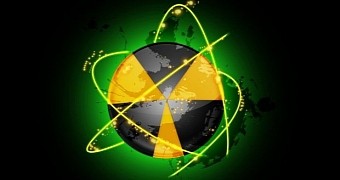Towards the beginning of last year, on February 14, excessive radiation levels were documented in the underground at the Waste Isolation Pilot Plant in New Mexico, US, a facility built to serve as a repository for nuclear waste.
In a new report, the US Department of Energy writes that, having completed its investigation into this incident, it found that cat litter was partly to blame for the February 14, 2014 nuclear waste leak and subsequent spike in radiation levels.
Yes, the US Department of Energy is talking about cat litter just like the one our pet felines use as their toilet, not some bizarre variety designed especially for use at New Mexico's Waste Isolation Pilot Plant and other dumps that hold nuclear material.
How can regular cat litter cause a radiation leak?
It is understood that the February 14, 2014 radiation leak at the Waste Isolation Pilot Plant in New Mexico happened because of just one drum of nuclear waste that burst open. In the US Department of Energy's report, this drum is identified as 68660.
The drum burst and spilled some of the nuclear material in it due to a series of chemical reactions that caused it to heat up and eventually rupture. As surprising as this may sound, Swheat Scoop cat litter was involved in these chemical reactions.
As explained by specialists with the US Department of Energy, cat litter does an amazing job of absorbing liquid nuclear waste, hence the fact that crews at nuclear laboratories scattered across the US have been using it to clean up toxic materials for years now.
The one mistake that caused drum 68660 to rupture and spill some of its content was adding organic instead of inorganic cat litter to it. Its distinct chemical makeup made it possible for the organic cat litter to interact with the other material in the drum.
“A series of ever-increasing heat releasing reactions occurred, which led to the creation of gases within the drum. The resulting build-up of gases within the drum displaced the drum lid, venting radioactive material and hot matter that further reacted with the air and other materials,” experts say.
There is no place for mishaps in the nuclear industry
After the February 14, 2014 nuclear waste leak and the spike in radiation levels that followed the rupture of drum 68660, key operations at the Waste Isolation Pilot Plant in New Mexico were suspended for an indefinite period of time, and rightfully so.
Now that it knows exactly how this incident came to happen, the US Department of Energy is looking to get the facility back online. In fact, word has it that plans are being made for it to once again be fully operational by the beginning of 2016 at the latest.
The Waste Isolation Pilot Plant in New Mexico is Department of Energy's only repository for certain types of nuclear waste produced by weapons sites and laboratories, so it's no wonder it so desperately wants to reopen it. Then again, many claim that the dump is not safe and should be abandoned.

 14 DAY TRIAL //
14 DAY TRIAL //